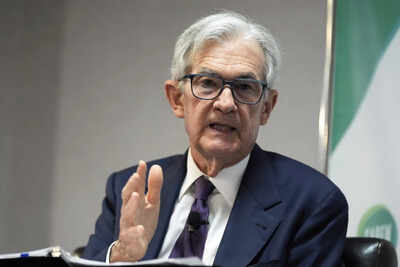Asian markets rally as they adjust to temporary US tariff relief by Donald Trump

Global equity markets soared on Tuesday as they adjust to US President Donald Trump temporary reliefs announced for electronics like smartphones and computers from tariffs. The move, seen as a potential easing in trade tensions—particularly with China—sparked a surge in investor optimism across continents. Equities in Asia, Europe, and the US responded with strong gains, while Indian indices rallied sharply after a market holiday on Monday.
Sensex and Nifty leap
Stock markets opened on a high note, with the benchmark indices showing a sharp upward movement. The BSE Sensex jumped over 1500 points points to reach 76,907.63, and the NSE Nifty surged 539.8 points to touch 23,368.35 in early trade. These gains followed previous week’s strong closing, where the Sensex rose over 1,300 points and the Nifty advanced nearly 430 points.
Among the top gainers on the Sensex were Tata Motors, which rose 5%, followed by strong performances from Larsen & Toubro, HDFC Bank, Mahindra & Mahindra, ICICI Bank, and IndusInd Bank. However, defensives like Hindustan Unilever, Asian Paints, Nestle, and Kotak Mahindra Bank underperformed, possibly due to sector rotation.
Asian markets reflect optimism
Asian markets followed the bullish tone set by Wall Street the previous day. Japan’s Nikkei 225 surged 0.9 per cent to 34,336.74, lifted by strong performances from Toyota (+4.9 per cent), Honda (+4.8 per cent), and Sony (+3.1 per cent). Tech-related names like Tokyo Electron and Renesas also posted gains.
South Korea’s Kospi added 0.8 per cent, supported by chipmakers and large-cap industrials, while Australia’s ASX 200 advanced 0.5% amid broad-based buying. In contrast, Chinese markets were mixed. The Shanghai Composite edged down 0.1%, while the Hang Seng Index in Hong Kong inched up by less than 0.1%, reflecting investor caution about China’s exclusion from U.S. tariff pauses.
Wall Street climbed on tech and auto gains
Asian markets opened on a positive note Tuesday, taking cues from Wall Street, where US markets closed higher on Monday. The S&P 500 rose 0.8% to 5,405.97, the Dow Jones Industrial Average climbed 1.1% to 40,524.79, and the Nasdaq Composite added 0.6% to settle at 16,831.48, driven by gains in technology and automotive stocks.
Technology firms led the rally after Trump’s announcement. Apple gained 2.2%, and Dell Technologies jumped 4%. The exemption helps shield these companies—and their customers—from a potential price spike. Automakers also reacted positively, with General Motors up 3.5% and Ford Motor gaining 4.1%, after Trump hinted at extending similar tariff relief to the auto industry.
Market sentiment lifts as bond yields stabilise
The bond market, which had recently shown signs of stress, calmed as Treasury yields retreated. The yield on the 10-year U.S. Treasury note eased to 4.35% after spiking to 4.48% on Friday. The decline followed a reassuring report from the Federal Reserve Bank of New York, showing that long-term inflation expectations among households remained stable.
Lower yields suggest that investors are less concerned about aggressive interest rate hikes in the near future. This shift helped reinforce the equity rally and provided some breathing room for risk assets.
Tariff strategy sparks mixed reactions
Despite the market rally, analysts are warning that the reprieve may be short-lived. Trump’s tariff policy has been characterized by abrupt announcements and selective pauses, creating uncertainty. Stephen Innes, Managing Partner at SPI Asset Management, described the situation as “market management by whack-a-mole,” noting the pattern of sudden policy shifts followed by partial reversals.
Vikas Jain, Head of Research at Reliance Securities, noted that while the current exemptions are a positive development, the overall unpredictability of US trade policy still poses risks to market stability.
Oil and currency markets remain steady
In commodity markets, Brent crude—the international benchmark—rose by 0.09 per cent to $64.94 per barrel. US benchmark crude added 17 cents to reach $61.70. Currency markets remained largely stable, with the U.S. dollar inching higher to 143.14 yen and the euro slightly lower at $1.1346.
These movements suggest that broader macroeconomic indicators are holding steady, reinforcing investor confidence for now.
Outlook: Relief rally or temporary respite?
While the tariff exemptions have triggered a global relief rally, many analysts caution that the outlook remains volatile. The temporary nature of the reprieves, coupled with the lack of a clear long-term trade framework, leaves markets vulnerable to future shocks.
Investors are expected to keep a close watch on further announcements from Washington and any signs of progress—or setbacks—in trade talks.





